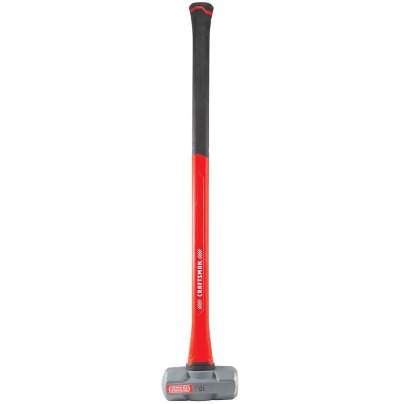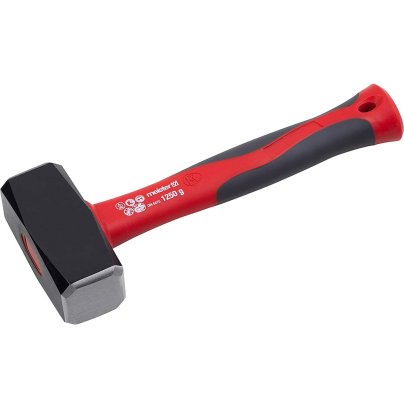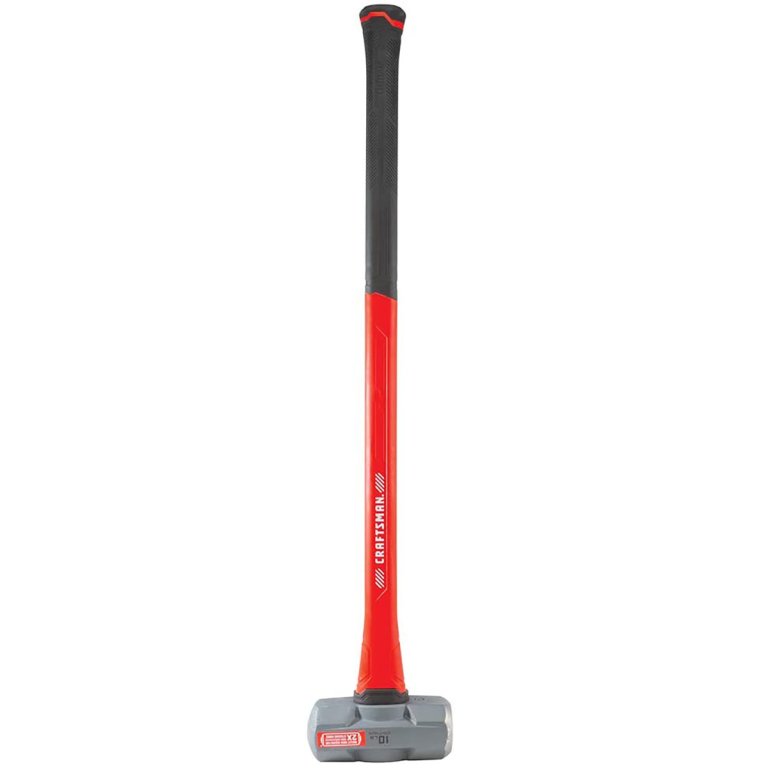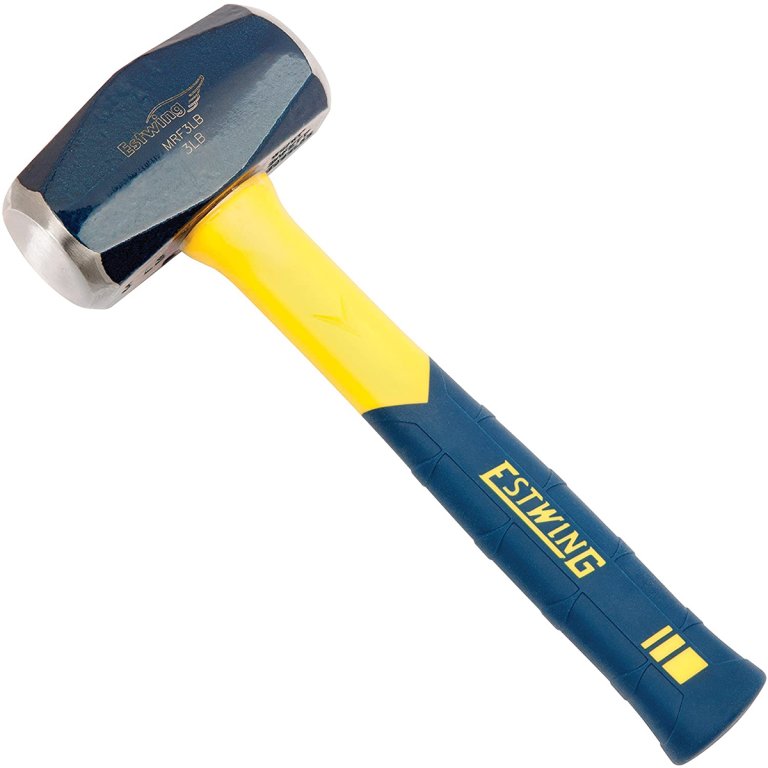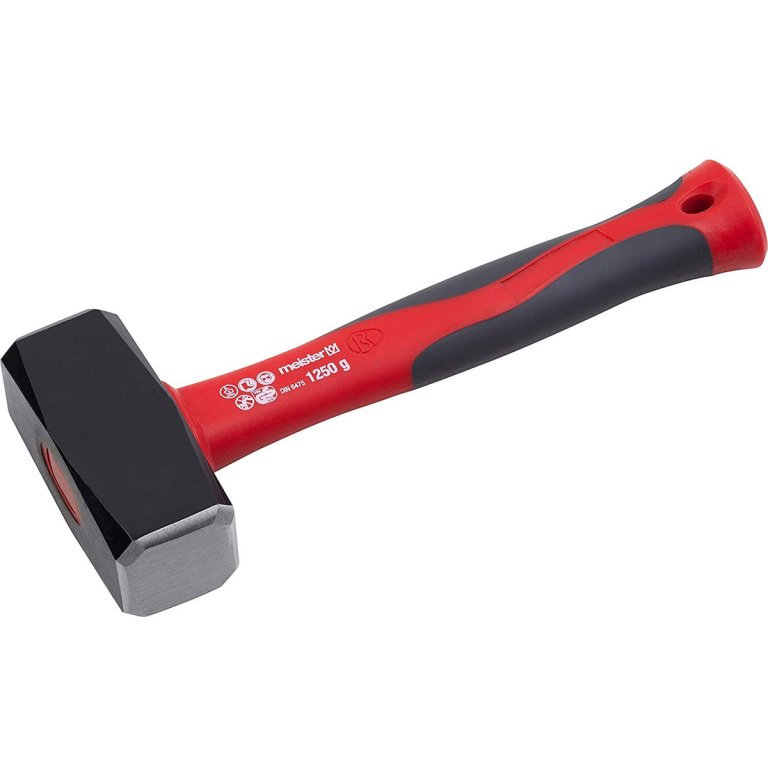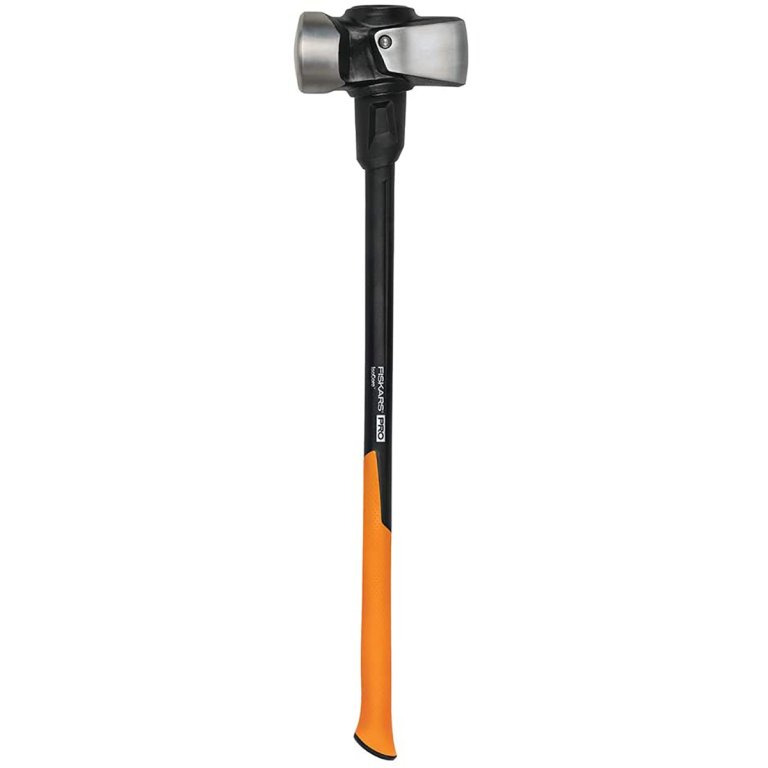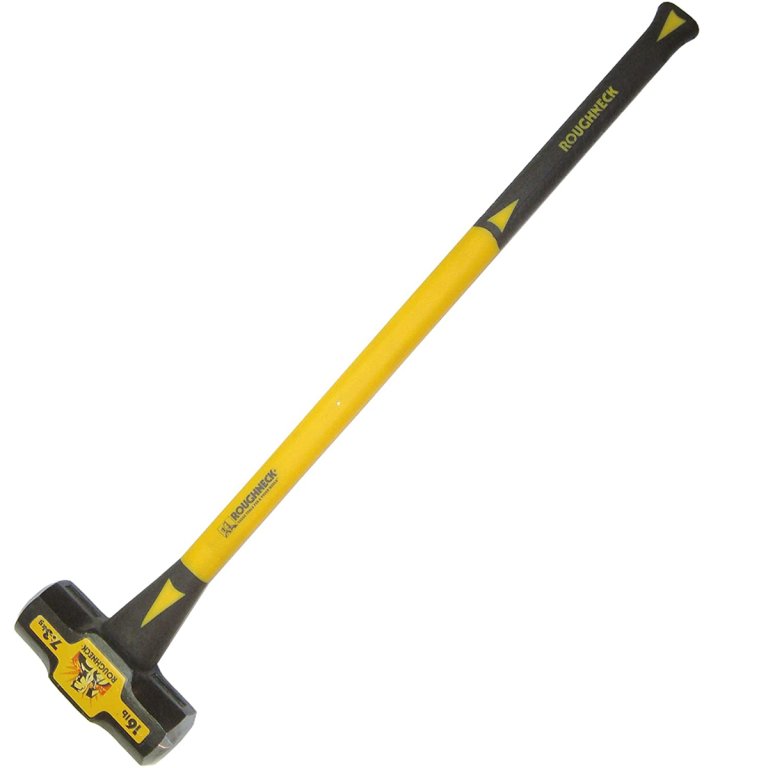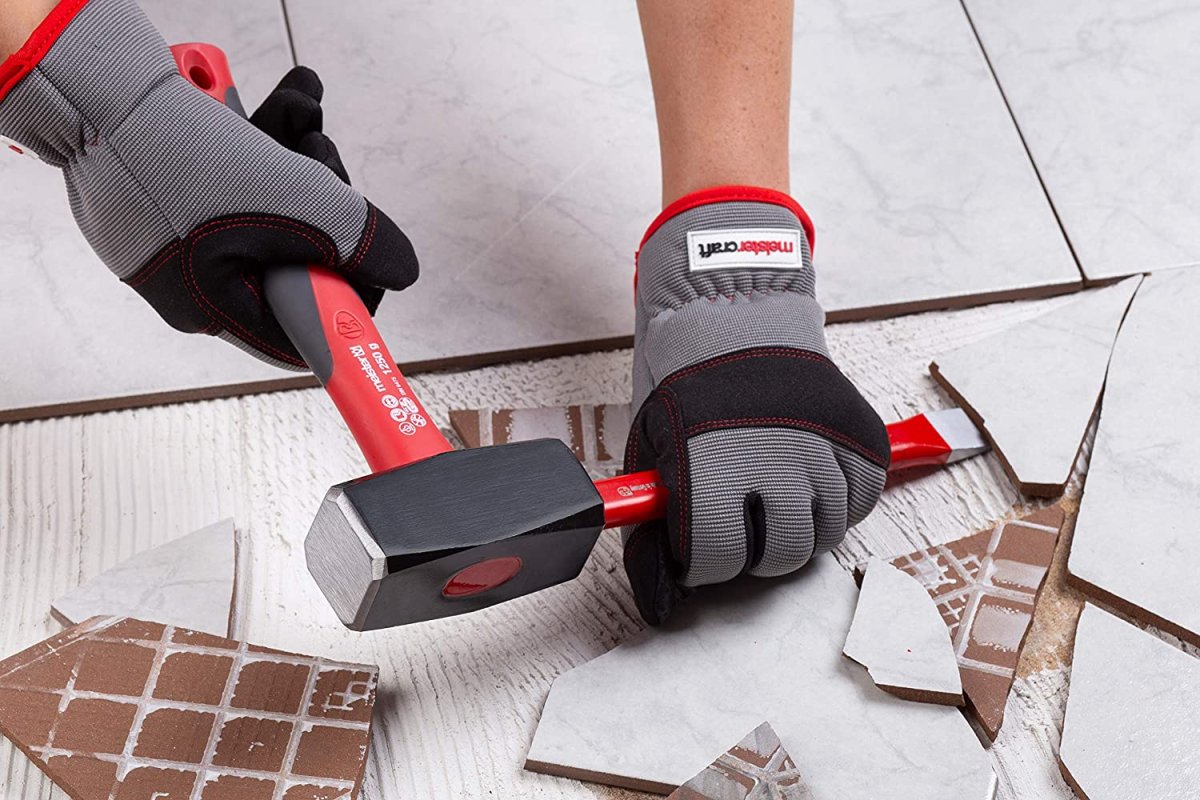
We may earn revenue from the products available on this page and participate in affiliate programs. Learn More ›
There’s no denying that swinging a sledgehammer is a ton of fun for many people, but beyond the amusement at hefting this destructive tool, the best sledgehammer can help DIYers complete a range of projects. An obvious example is simple demolition. A sledgehammer can provide the force to knock out a wall, break concrete, and shatter wood, and the force from this tool also can help you pound fence posts into the ground, hammer thick stakes, or even get in a good workout.
The best sledgehammer for your demolition project will depend on the intended use, the material being destroyed or constructed, and the physical features of the tool, including the head, shaft, and handle. To learn more, take a look at the list of top products listed below, then read on to discover the important product features you should know before choosing the best sledgehammer to add to your workshop.
- BEST OVERALL: CRAFTSMAN Sledge Hammer, 10-Pound
- BEST BANG FOR THE BUCK: Estwing Sure Strike Drilling/Crack Hammer 3-Pound
- BEST LIGHTWEIGHT: Meister 2203660 Sledge Hammer 1250 g Fibreglass
- BEST HEAVY-DUTY: Fiskars PRO 750640-1001 IsoCore Sledge Hammer
- BEST WITH LONG HANDLE: Roughneck Sledge Hammer 16 lb Fibreglass Handle
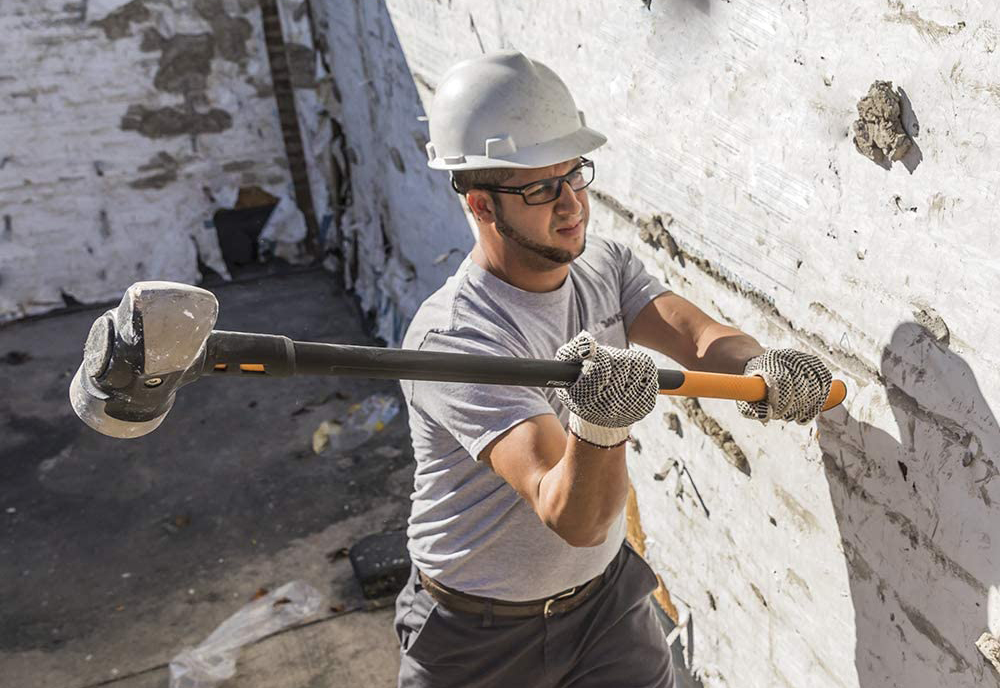
What to Consider When Choosing the Best Sledgehammer
When searching for a sledgehammer, it’s important to understand how the tool will be used and what tasks it will help accomplish, as well as the physical design and function of a sledgehammer, including the grip, shaft, and head.
Intended Use
A sledgehammer, like any other tool, is designed for a specific purpose, but depending on the size, weight, and construction of the sledgehammer, the range of uses can differ substantially. Lightweight sledgehammers work primarily for driving hardened nails or hammering chisels, punches, or star drills. They typically have short 12-inch shafts and handles made of metal, fiberglass, or wood.
Standard and heavy-duty sledgehammers normally have long 36-inch shafts and handles. These handles can be made from metal for increased durability, lightweight fiberglass, or electricity-resistant heavy-duty wood that is more appropriate for working around electrical circuits. These sledgehammers are intended for breaking concrete, splitting wooden frames, and tearing down walls, though they also are used as exercise equipment.
Material
A sledgehammer is a simple tool that is only as good as the material that goes into its construction. For this reason, it’s very important to consider both the head and the shaft before deciding on a sledgehammer. The head of a sledgehammer is typically made of steel, but not all steel is made equally. Soft steel can distort with heavy use, so it’s best to look for drop-forged or hardened steel heads.
Manufacturers might produce the shaft of a sledgehammer in hardwood, fiberglass, or steel.
- Hardwood has a natural flex that absorbs impact and vibration, reducing strain on the user’s hands. This type of shaft is also resistant to electricity, but wood is prone to cracking and splitting, especially if it’s exposed to the elements.
- Fiberglass is a great option with a degree of electrical resistance similar to wood, but it’s a tougher and more lightweight material.
- Steel isn’t as light as fiberglass, and it can conduct electricity, but it’s the best option for durability. While fiberglass can shatter in extreme circumstances, steel sledgehammer shafts can withstand substantial impact and vibrational forces without bending.
Head Weight
The head weight of a sledgehammer is typically defined as lightweight, standard, or heavy duty.
- Lightweight sledgehammers range from 2 to 6 pounds. They are mostly used along with chisels, punches, and star drills or for precise demolition projects, like cracking floor tile or tub surrounds.
- Standard sledgehammers measure between 7 and 15 pounds. Typical projects for a standard-size sledgehammer include removing walls, breaking concrete, and other DIY demolition and renovation tasks.
- Heavy-duty sledgehammers have heads that weigh 16 pounds or more. These massive sledgehammers are intended for demolition professionals who can use the added weight effectively for breaking stones, concrete, brick, and other hardened materials.
Shaft Length
The shaft refers to the part of the sledgehammer that includes the handle and extends down through the head. It typically varies in length from about 10 inches for lightweight sledgehammers to 36 inches for standard and heavy-duty sledgehammers. The shaft provides a fixed connection between the handle and the head of the hammer so that a longer handle will be able to impart more physical force than a shorter handle.
Though long handles provide power, they can become a hindrance when working in a tight space or trying to drive small nails or bolts. In these cases, it’s better (and safer) to rely on a sledgehammer with a short handle than to try and swing a standard sledgehammer.
Grip
The grip on a sledgehammer is at the top of the shaft and typically extends down the shaft to allow enough space for a one-handed grip on lightweight sledgehammers or a two-handed grip on standard or heavy-duty sledgehammers. Typically, sledgehammer makers use a rubberized material molded into an ergonomic shape, making it easier to grab and control the tool.
This grip might also have a textured surface that helps to prevent the sledgehammer from sliding out of a user’s grasp while swinging. The grip also helps shield the hands from the shock and vibration that can radiate from the sledgehammer head all the way up the shaft.
Our Top Picks
The products below were chosen for quality, price, customer satisfaction, and the considerations mentioned above. Take a look at this list to find some of the best sledgehammers to help make your next demolition project easier and more efficient.
Best Overall
CRAFTSMAN Sledge Hammer, 10-Pound
The standard-size Craftsman sledgehammer is a great addition to a workshop or garage because it comes with a 10-pound head made of forged steel suitable for household demolition and renovation projects. The head also has a specialized bullet-nose shape that concentrates the force of the swing instead of spreading it out. This allows the sledgehammer to impart more force into a small area, increasing the strength of the strike.
The shaft of the sledgehammer has a particulate-filled fiberglass core, and a shock-absorbing collar mitigates the vibration after a strike. The shaft measures 36 inches long, topped with a sturdy and textured rubber grip to ensure comfort and control during use.
Best Bang For the Buck
Estwing Sure Strike Drilling/Crack Hammer 3-Pound
Picking up a new lightweight sledgehammer for the tool box isn’t a big expense with the affordable Estwing Sure Strike sledgehammer. This sledgehammer has a durable fiberglass handle that measures 10 inches long and a comfortable rubber grip that helps reduce hand fatigue. The grip also has raised ridges that make it easier to hold firmly while swinging.
The sledgehammer has a 3-pound hammerhead suitable for working with chisels, punches, or star drills and hammering hardened nails, stakes, and tent pegs. The head is forged steel, and both faces of the sledgehammer feature a smooth finish to provide a completely flat striking surface ideal for driving smaller objects. The bright yellow shaft helps locate the tool in dim work areas, and stands out in a tool box.
Best Lightweight
Meister 2203660 Sledge Hammer 1250 g Fibreglass
Lightweight sledgehammers like this Meister 2203660 are designed to impart a significant amount of force onto an object, like a chisel, or to directly demolish tiles, tub surrounds, and backsplashes. The sledgehammer has a 2.76-pound head that features two sanded faces to help the head grip the struck object. This increased friction reduces the chance of the head sliding off during a strike and causing damage or injury.
The head of the lightweight sledgehammer is made of durable drop-forged steel that resists corrosion and rusting. Lightweight fiberglass makes up the shaft of the sledgehammer, which measures 10 inches in length. It also has a cushioned grip with a textured surface to reduce vibration and add comfort, stability, and control.
Best Heavy-Duty
Fiskars PRO 750640-1001 IsoCore Sledge Hammer
Heavy-duty sledgehammers like this Fiskars sledgehammer are designed to take on tough objects again and again, destroying walls, smashing concrete floors, and even breaking rocks. The heavy-duty sledgehammer has a 36-inch fiberglass shaft with a steel-jacketed core for added strength. It’s topped with a nonslip rubber grip that absorbs impact and vibration, protecting the hands and reducing muscle strain and fatigue.
The 16-pound head of the sledgehammer is made with forged, heat-treated steel and finished with a rust-resistant coating. It imparts significant downward force when swung properly, using the flat face for broad demolition or hammering purposes and the wedged face for concentrated strikes to deal with hard materials like concrete and rock.
Best With Long Handle
Roughneck Sledge Hammer 16 lb Fibreglass Handle
The Roughneck Sledge Hammer has a 36-inch-long fiberglass shaft. As the shaft length increases on a sledgehammer, the strength of the strike also increases. This is because the sledgehammer head must travel in a greater arc, allowing it to gather additional energy from the swing and the gravitational force of the weighted head. This Roughneck sledgehammer is an ideal option for swinging the heavy 16-pound head to maximize its destructive effect while retaining control of the strike.
The head of this heavy-duty sledgehammer is made of drop-forged, heat-treated steel to ensure it can withstand substantial impact force without denting or chipping. The top of the shaft has an impact-resistant grip that helps to reduce hand fatigue and muscle strain from vibration damage. It’s still a good idea to wear gloves, however, regardless of the sledgehammer design.
FAQs About Sledgehammers
Read on to find answers to some of the most commonly asked questions about sledgehammers and how to use them in your next demolition and renovation project.
Q. What is a sledgehammer used for?
Sledgehammers are primarily used for demolition work, like breaking concrete, removing walls, or taking down cabinets. However, they also serve as a heavy-duty tool for more constructive purposes, such as building a fence or getting in a good workout, especially when paired with a large tire.
Q. How heavy should my sledgehammer be?
This depends on the work being completed, though a sledgehammer can range in weight from just 2 pounds to as much as 20 pounds. Choose lightweight sledgehammers when the object being struck is smaller or requires a higher degree of control.
Heavy-duty sledgehammers are a force of destruction when used correctly. Use these tools for breaking concrete, walls, or working out. A full-size sledgehammer will not fit inside a tool box, so place it inside the workshop or garage cabinet for safe storage. Have a lightweight handheld sledgehammer that can travel in the tool box as well.
Q. Can a sledgehammer break concrete?
Yes, a sledgehammer can break concrete. In fact, breaking concrete is one of the main purposes tool companies design a sledgehammer to accomplish.
Q. How do you swing a sledgehammer?
To use a lightweight sledgehammer, simply swing it in the same way that you would a normal hammer. However, to use a heavy-duty sledgehammer, the grip and process are more complex.
- Grip the sledgehammer with one hand positioned on the handle, and one positioned near the head of the tool.
- Pick the hammer up over the head, and as the hammer is lifted up, slide the hand positioned near the head toward the handle.
- From this overhead position, the user can swing the head of the hammer downward with significant force to break concrete or tear down drywall.
- After impact, slide one hand back down to the head of the sledgehammer and raise it again.
